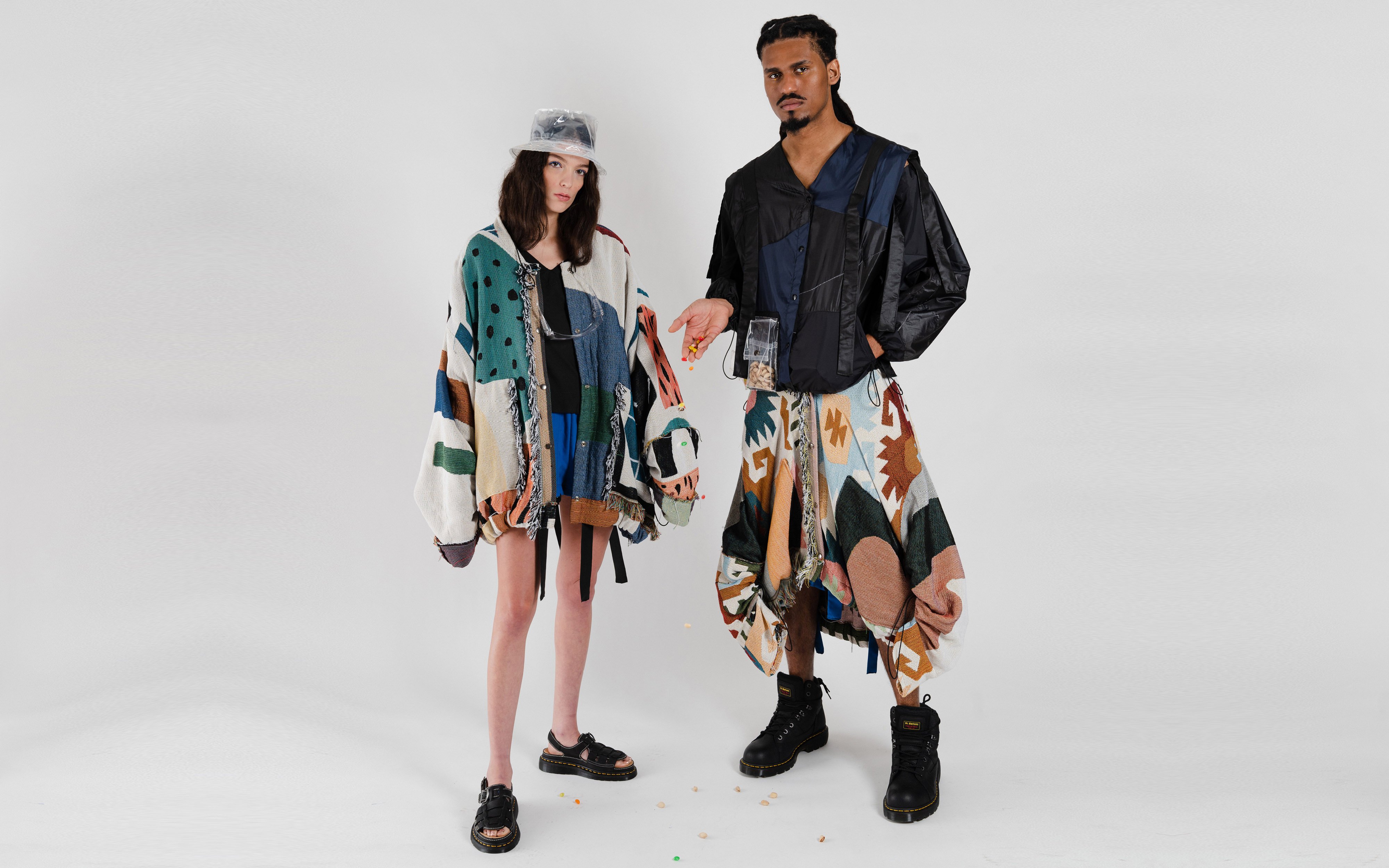Adiff’s co-founders on what their upcycling-focused book means for the future of fashion.
Now here’s some creative fare to truly get behind: the recently released Open Source Fashion Cookbook, a critical and inventive title that presents an inclusive and intimate approach to eco-conscious design. It features essays by sustainability thought leaders, including Céline Semaan and Aditi Mayer, and a host of thorough how-to instructions for making upcycled garments based on patterns from brands like Ræburn, Chromat and BrownMill.
The “cookbook” is the brainchild of Angela Luna and Loulwa Al Saad, co-founders of New York-based genderless label Adiff. As an activism- centric read, it affords the chance to better understand the colonial roots and capitalistic structures that have enforced — and continue to reinforce — the myriad problematic ethical and environmental aspects of the fashion industry. Yet, as both the book and the brand exemplify, they’re issues we can attempt to course correct.
“Sustainability has always been a priority for us, but we didn’t really take our work into the realm of upcycling until 2018, when we were part of the CFDA’s Elaine Gold Launch Pad Program,” says Luna about confronting Adiff’s product output and contribution to the aforementioned systemic problems. “That’s when it became obvious to us that our system of donating product to help refugees and giving people solution-based garments was, in a roundabout way, further contributing to issues like climate change.”
Since this paradigm shift, Luna and Al Saad have continued to finesse Adiff’s operating model and amplify the “why” behind its thoughtfully crafted pieces, like a genderless reflective vest that is produced in a facility that employs resettled refugees. In tandem with this purpose-driven refinement, the duo devised the idea for an approachable, instructional book that would highlight the voices of people working in the sustainability space as theorists and activists as well as creatives whose work is similarly value-driven.
In a particularly unprecedented gesture, the book’s contributors dive deeply into the concept of “sustainable creation” by teaching readers how to make an array of wearables, such as Adiff’s blanket jacket, Assembly’s shirtdress, BrownMill’s patched sweatshirt and Chromat’s Mikito suit. “We’re trying to bring things a little closer to the customer,” says Luna, adding that a second edition of the book, which will feature more pieces by an even broader range of brands, is already in the works. She notes that as sustainability has become more of a crucial concept within the style space, consumers are being inundated with information that can be hard to interpret and apply to their own daily wardrobe choices. “You can make the items in the book yourself using materials you already have, which is empowering in terms of understanding the process a bit more,” she says.
“True sustainability goes beyond consumerism,” says Al Saad, pointing to a swell in the launch of fashion lines that boast an eco-friendly philosophy. “It’s about shopping less, using what we already have, upcycling and taking a cue from traditional practices such as mending and repairing. That’s what everyone was used to doing back in the day, before sustainability was rebranded as a marketing buzzword.”
Along with its “360-degree view,” thanks to its range of voices, the book addresses a key quandary of sustainable design: the persistence of ingenuity. “The fashion industry as a whole isn’t going to go away,” says Luna. “Designers are always going to want to create new things. But by open-sourcing their designs, they can continue creating new things without great expense to the planet and garment workers…. From a brand perspective, it’s important for designers to think about other ways of spreading their aesthetic and vision than just selling a specific product.”
There’s also the fundamental truth that to tackle fashion’s — and the greater world’s — harmful architecture, we must all band together as one. As Al Saad illustrates with a nod to one of the book’s essays (by Otto von Busch), which begins by comparing mindfully made finery to homemade confectionery: “Fashion is best when it’s shared. And that idea emphasizes our goal, which is to democratize sustainable fashion and share it with everyone.” In that spirit, bon appétit.
Check out a few of our favourite recent haute upcycling moments here:
